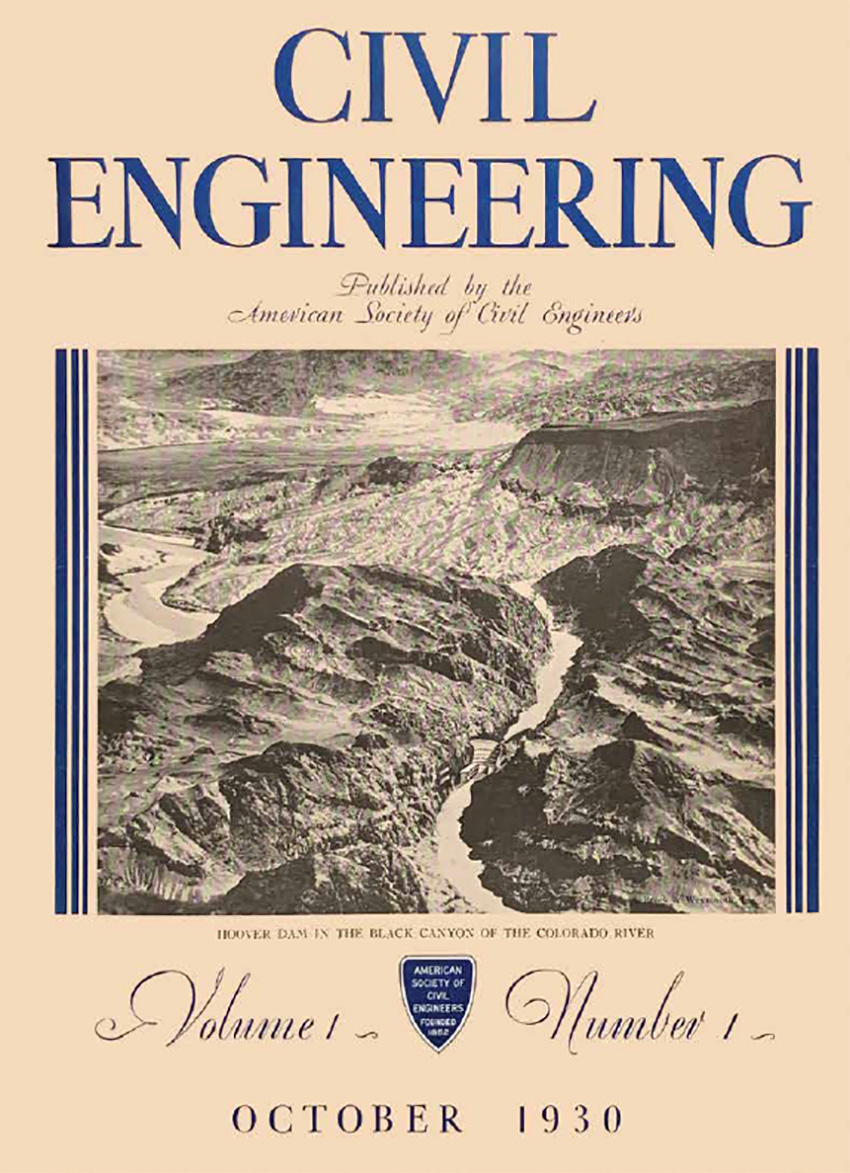
By Margaret M. Mitchell
Happy New Year! In addition to celebrating a new year with all its opportunities, hopes, and dreams, there is another event to commemorate: Civil Engineering magazine turns 95! Though the official birthday isn’t until October 1, I thought we could take a stroll down memory lane to see what was in that very first issue nine and a half decades ago.
 dit photo credit]
dit photo credit] The cover featured the site of Hoover Dam, nestled in the Colorado River’s Black Canyon. On Dec. 21, 1928, President Calvin Coolidge signed into law the Boulder Canyon Project Act, appropriating $165 million for the dam and related projects. Elwood Mead, M.ASCE — the then-commissioner of the Bureau of Reclamation, director of the Hoover Dam project, and author of the cover story — wrote that the dam, principally designed for flood control and regulating the flow of the Colorado River, was “unquestionably the greatest engineering enterprise of its kind being undertaken anywhere in the world today.”
Other notable articles in the issue included “Solving Manhattan’s Transportation Problem” by Francis Lee Stuart, M.ASCE, one-time consulting engineer for New York and a Society vice president; “Professional Status of the Engineer” by William E. Wickenden, an engineering educator and the then-president of the Case School of Applied Science; and “Guiding Principles of the Activated Sludge Process” by T. Chalkley Hatton, M.ASCE, a former Society director and someone who “for the past 16 years has been intimately connected with the remarkable pioneering developments in the treatment of the sewage of Milwaukee, both as chief engineer and as consulting engineer,” according to the table of contents.
J.F. Coleman, Hon.M.ASCE, wrote the first president’s note, titling it “A Great Progressive Step.” That step was the creation of Civil Engineering. The monthly magazine would do what Proceedings, a collection of papers, could not. Though Proceedings would continue to be produced by ASCE and function as the Society’s “fundamental technical publication,” the hope for this new magazine was that it would be easier to read, the articles within it shorter and less technical, and the overall appearance designed to be “with attractive type, with non-transparent paper, and with clearer illustrations.”
What’s more, Coleman wanted Civil Engineering “to be the work of its contributors, primarily members of the Society, and as such will be just what the membership makes of it. Details, here or there, it cannot be expected, will be entirely satisfactory to each of the Society’s 14,000 and more members, but in its conception and general endeavor it certainly must appeal.”
For the past 95 years, this magazine has brought readers the latest projects, designs, and news in the world of civil engineering. And this issue, the theme of which is Boldly Designed, is no exception. It presents articles on the construction of an exhibit to house the retired space shuttle Endeavour; the building of the highly sustainable Intuit Dome; the Centre Aquatique Olympique in Saint-Denis, Paris, built for swimming and diving events at the 2024 Paris Olympics; and Wisdome Stockholm, an extension to Sweden’s National Museum of Science and Technology.
We certainly hope Civil Engineering continues to appeal to the now more than 150,000 ASCE members — and that it will continue to do so for another 95 years!
Margaret M. Mitchell is the editor in chief of Civil Engineering.
This article first appeared in the January/February 2025 issue of Civil Engineering as “A Year to Look Forward To.”



